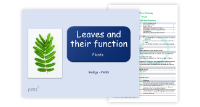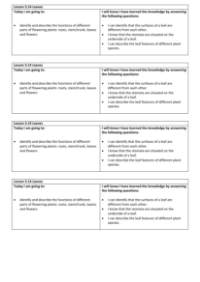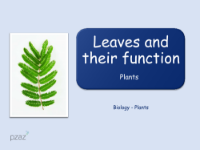Leaves - Teacher Explanation

Science Resource Description
Welcome to lesson 3.14 on "Leaves and their function" within the Year 3 unit on plants. In this lesson, pupils will explore the various parts of flowering plants such as roots, stems or trunks, leaves, and flowers, focusing particularly on leaf functions. It is important to be mindful of any students with plant allergies as this lesson involves handling plant matter. After conducting experiments, it's essential that children wash their hands thoroughly with soap and water. This lesson also offers cross-curricular opportunities: pupils could express their understanding creatively by writing a poem about the seasonal changes in leaves or apply their maths skills by calculating average leaf lengths from the same plant species.
The lesson begins with an introduction to using microscopes, which are considered ideal for educational purposes. They are user-friendly, requiring no slide preparation, and feature a simple operation with a light that turns on at the press of a button. For the microscopy activity, different types of leaves, especially lily leaves, are recommended for observation. These microscopes magnify up to 120 times, allowing clear visibility of leaf details. Pupils are encouraged to first look at familiar objects, such as their handwriting, to understand the focusing mechanism, which includes narrow and wide focus options. After examining the leaves under the microscope and observing features like water droplets, which appear diamond-like, pupils will draw their observations, linking the activity to art. They will also discuss the different shades of green on either side of a leaf, hinting at distinct functions for each surface, with the top facilitating most photosynthesis and the underside managing water regulation through tiny pores called stomata.






